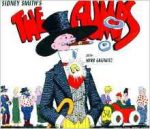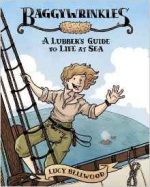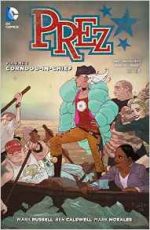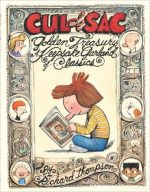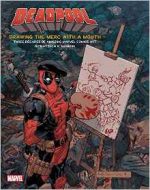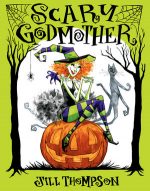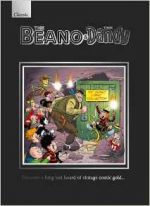

By Many and various (DC Thomson)
ISBN: 978-1-84535-604-0 (2017)Â Â Â Â Â Â Â Â Â Â Â Â Â Â Â Â Â ISBN: 978-1-84535-557-9 (2016)
Win’s Christmas Gift Recommendation: Evergreen Seasonal Traditions Celebrated and Ideal Last-Minute Gifts… 10/10
As we’re all feeling a wee bit Caledonian at present here in Win Ha-Ha-Hacienda, I thought I’d take another loving look at some of Scotland’s greatest achievements whilst simultaneously revelling in the Good Old Days of comics…
If you’re too busy to read yet more of my lecturing hectoring blather, feel free to skip the review… just as long as you buy these books for yourself or someone in severe need of a good cheering up and infectious laugh…
The shape and structure of British kids cartoon reading owes a huge debt to writer/editor Robert Duncan Low who was probably DC Thomson’s greatest creative find.
Low (1895-1980) began at the publishing monolith as a journalist, rising to the post of Managing Editor of Children’s Publications where he conceived and launched – between 1921 and 1933 – the company’s “Big Five†story-papers for boys. Those rip-roaring illustrated prose periodicals comprised Adventure, The Rover, The Wizard, The Skipper and The Hotspur.
In 1936 his next brilliant idea was The Fun Section: an 8-page pull-out supplement for Scottish national newspaper The Sunday Post consisting of comic strips. The illustrated accessory premiered on 8th March and from the very outset The Broons and Oor Wullie – both rendered by the incomparable Dudley Watkins – were its unchallenged stars…
Low’s shrewdest move was to devise both strips as domestic comedies played out in the charismatic Scottish idiom and broad unforgettable vernacular. Ably supported by features such as Auchentogle by Chic Gordon, Allan Morley’s Nero and Zero, Nosey Parker and other strips, they laid the groundwork for the company’s next great leap.
In December 1937 Low launched the DC Thomson’s first weekly pictorial comic. The Dandy was followed by The Beano in 1938 and an early-reading title The Magic Comic the year after that.
War-time paper shortages and rationing sadly curtailed this strip periodical revolution, and it was 1953 before the next wave of cartoon caper picture-papers. To supplement Beano and Dandy, the ball started rolling again with The Topper, closely followed by a host of new titles such as Beezer and Sparky to augment the expanding post-war line.
Every kid who grew up reading comics has their own personal nostalgia-filled nirvana, and DC Thomson have always sagely left that choice to us whilst striving to keep all eras alive with carefully-tooled collectors’ albums like this brace of giant (225 x 300 mm) hardback Gift Books.
These have all the appeal and panache of coffee-table art books; gathering material from nearly eight decades of publishing – including oodles of original art reproductions – but rather than just tantalising and frustrating incomplete extracts, here the reader gets complete stories starring immortal characters from comics and Christmas Annuals past…
Both of these sturdy celebrations of the company’s children’s periodicals division rightly glory in the incredible wealth of ebullient creativity that paraded through the flimsy colourful pages of The Beano and The Dandy. They’re also jam-packed with some of the best written and most impressively drawn strips ever conceived: superbly timeless examples of cartoon storytelling at its best…
However rather than a chronological arc tracing from a particularly bleak and fraught period in British history through years of growth, exploration and socio-cultural change, we’re treated to a splendid pick-&-mix protocol, with a surprise on every turn of a page…
Until it folded and was reborn as a digital publication on 4th December 2012, The Dandy was the third-longest running comic in the world (behind Italy’s Il Giornalino – launched in 1924 – and America’s Detective Comics in March 1937). Premiering on December 4th 1937, it broke the mould of its traditionalist British predecessors by using word balloons and captions rather than narrative blocks of text under sequential picture frames.
A huge success, The Dandy was followed eight months later on July 30th 1938 by The Beano – and together they utterly revolutionised the way children’s publications looked and, most importantly, how they were received.
Over decades the “terrible twins†spawned a bevy of unforgettable and dearly-beloved household names to delight generations of avid and devoted readers, and their end-of-year celebrations were graced by bumper bonanzas of the weekly stars in extended stories housed in magnificent hardback annuals.
As WWII progressed, rationing of paper and ink forced “children’s papers†into an alternating fortnightly schedule. On September 6th 1941 only The Dandy was published. A week later just The Beano appeared. The normality of weekly editions only resumed on 30th July 1949…
And now they are cultural icons commemorated by fabulous compilations such as these.
The 2015 edition – another strand of the company’s growing range of heritage-drenched collectors’ collections and forwarded-dated 2016 like all proper Christmas annuals should be – is subtitled Pranks for the Memories!
This year’s model is codified as Raiders of the Lost Archive!…
As the name implies, our initial foray into fun is packed cover-to-cover with brilliant strips celebrating the art of the practical joke and starts on the inside front covers with a wonderful Biffo the Bear moment, illustrated by the astounding Dudley D. Watkins, followed by Davey Law’s Dennis the Menace, Contrary Mary by Roland Davies, Watkins’ cowboy superman Desperate Dan and a pantomimic exploit of Beano’s forgotten cover star Big Eggo by Reg Carter.
Short half-page monochrome of two-toned tales like James Jewell’s Wee Peem and Smarty Grandpa alternate with full-colour complete cover strips such as Korky the Cat by James Crichton (from The Dandy Comic for April 12th 1941), two-colour interior yarns from Hugh McNeil’s Pansy Potter – the Strongman’s Daughter or Leo Baxendale’s groundbreaking Bash Street Kids, all proving they knew how to set up a gag and deliver a punishing punchline…
There’s so many more old friends to revisit or, if you’re lucky, meet for the first time: The Three Bears, Eric Roberts’ timeless Winker Watson, Minnie the Minx, Roger the Dodger (Ken Reid), Lord Snooty and his Pals (represented here by a couple of lengthy Watkins wonders from various Annuals), Bully Beef and Chips (Jimmy Hughes), Tom Paterson’s Fiddle O’Diddle, Ivy the Terrible by Roy Nixon, Little Plum, Ron Spencer’s Baby Face Finlayson and even a relatively recent 16-page mega-epic with the entire Beanotown cast shanghaied into space.
Nor are these japes and jests one-trick-ponies. There are plus dozens of repeat performances for Biffo, Dennis, Dan, Korky (plus The Kits), Eggo and all the rest from later years and courtesy of the numerous illustrators who took over from the awesome originators…
Sadly none of the writers are named and precious few of the artists, but as always I’ve offered a best guess as to whom we should thank, and of course I would be so very happy if anybody could confirm or refute my suppositions…
The 2017 tome is blessed with a similar stellar selection under the umbrella title of Raiders of the Lost Archive!: offering similar childhood treasures and augmenting the humour with the odd – and they really were – dramatic strip presentation.
Contained herein you can become enrapt by the undersea adventures of Danny and Penny Gray in Bill Holroyd’s The Iron Fish and share a brace of seat-of-the-pants time-travel excursions by Jimmy and his Magic Patch (that man Watkins again) as well as a stunning and supremely silly Holroyd outing for schoolboy Charley Brand and his robot pal Brassneck…
Beside cover strips of Desperate Dan, Biffo, and Korky the Cat there are also extended Annual larks starring Little Plum, Lord Snooty, Roberts’ Dirty Dick and more Winker Watson strips, in addition to further frolics from those Bash Street Kids, Malcolm Judge’s Billy Whizz and George Martin’s outrageous, voracious and larcenous schoolteacher Greedy Pigg…
Topper export Beryl the Peril (by Karl Dixon) repeatedly joins Ken Reid’s Big Head and Thick Head, Baxendale’s Bash Street prototype When the Bell Rings, Bully Beef and Chips, Minnie the Minx, Holroyd’s Willie Fixit, European import Midge, David Law’s Corporal Clott, Roger the Dodger and his female nemesis Winnie the Wangler in unwise antics and silly sorties, barely stopped in each case by the forces of authority, be they parental, scholastic or state-sanctioned police…
Marvels of nostalgia and timeless wonder, the true magic of these collections is the brilliant art and stories by a host of talents who have literally made Britons who they are today, and bravo to DC Thomson for letting them out again to run amok once more.
© 2015, 2016 DC Thomson & Co. Ltd. All rights reserved.


